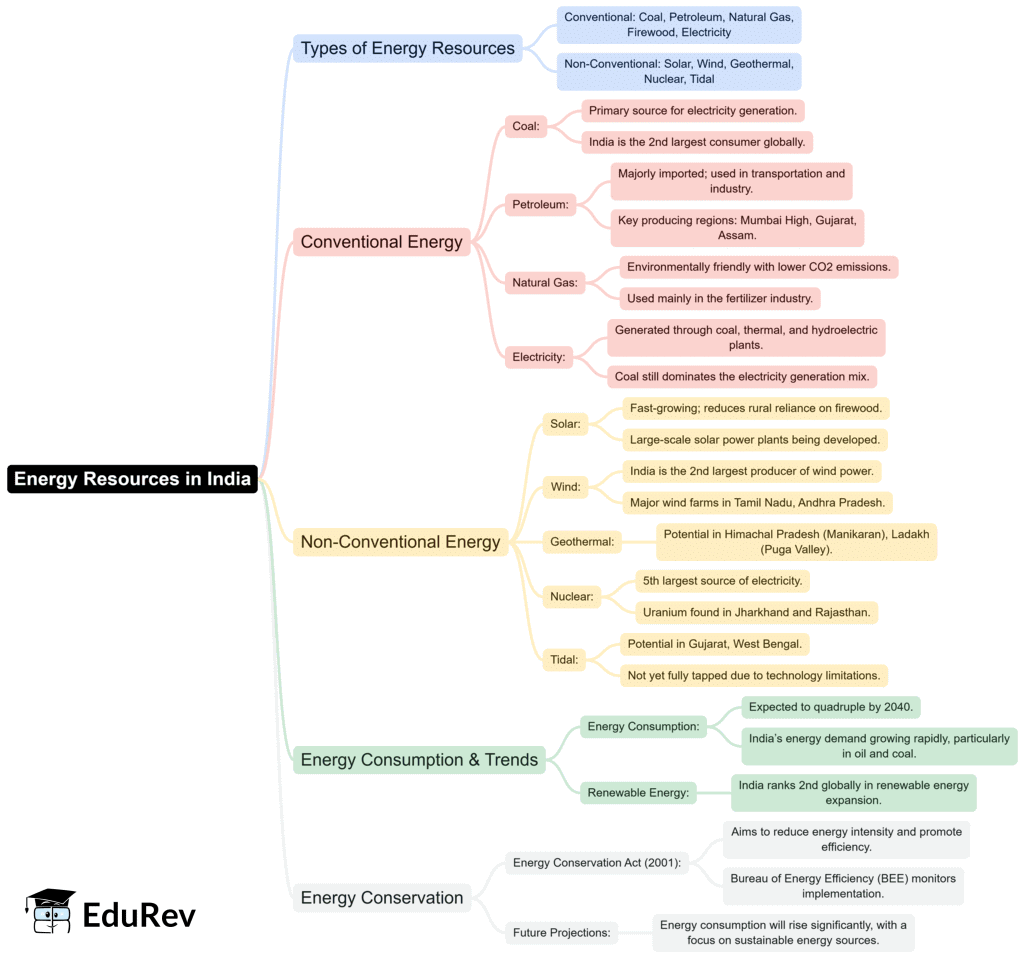UPSC Exam > UPSC Notes > Geography Optional for UPSC > Mind Map: Energy Resources in India
Mind Map: Energy Resources in India | Geography Optional for UPSC PDF Download

The document Mind Map: Energy Resources in India | Geography Optional for UPSC is a part of the UPSC Course Geography Optional for UPSC.
All you need of UPSC at this link: UPSC
|
303 videos|636 docs|252 tests
|
FAQs on Mind Map: Energy Resources in India - Geography Optional for UPSC
| 1. What are the major sources of energy resources in India? |  |
Ans. India utilizes a diverse range of energy resources, including fossil fuels like coal, oil, and natural gas, which are the primary sources of energy. Renewable sources such as solar, wind, hydroelectric, and biomass are gaining prominence. Nuclear energy also plays a vital role in India's energy mix, contributing to the country's efforts to reduce carbon emissions and enhance energy security.
| 2. How is India addressing the challenges of energy security? |  |
Ans. India is addressing energy security through various initiatives, such as diversifying its energy sources, increasing domestic production of fossil fuels, and investing in renewable energy technologies. The government has set ambitious targets for renewable energy generation, aiming for 500 GW by 2030, and is also focusing on international collaborations for energy imports and technology sharing.
| 3. What role does renewable energy play in India's energy policy? |  |
Ans. Renewable energy is central to India's energy policy, aimed at achieving sustainable development while reducing dependence on fossil fuels. The government has implemented several policies and incentives to promote solar, wind, and other renewable sources. This includes the National Solar Mission and various state-level initiatives that encourage investments in clean energy technologies.
| 4. How does the dependence on coal affect India’s environment? |  |
Ans. India's heavy reliance on coal for electricity generation significantly impacts the environment, contributing to air pollution, greenhouse gas emissions, and health issues among the population. The government is aware of these challenges and is working towards a gradual transition to cleaner energy sources, but coal still remains a major part of the energy mix in the short term.
| 5. What initiatives has the Indian government taken to promote energy efficiency? |  |
Ans. The Indian government has launched several initiatives to promote energy efficiency, including the Perform, Achieve and Trade (PAT) scheme, which incentivizes industries to reduce energy consumption. The Bureau of Energy Efficiency (BEE) also sets standards and labels for appliances to encourage the use of energy-efficient products. Additionally, public awareness campaigns help educate citizens on energy conservation practices.
Related Searches















